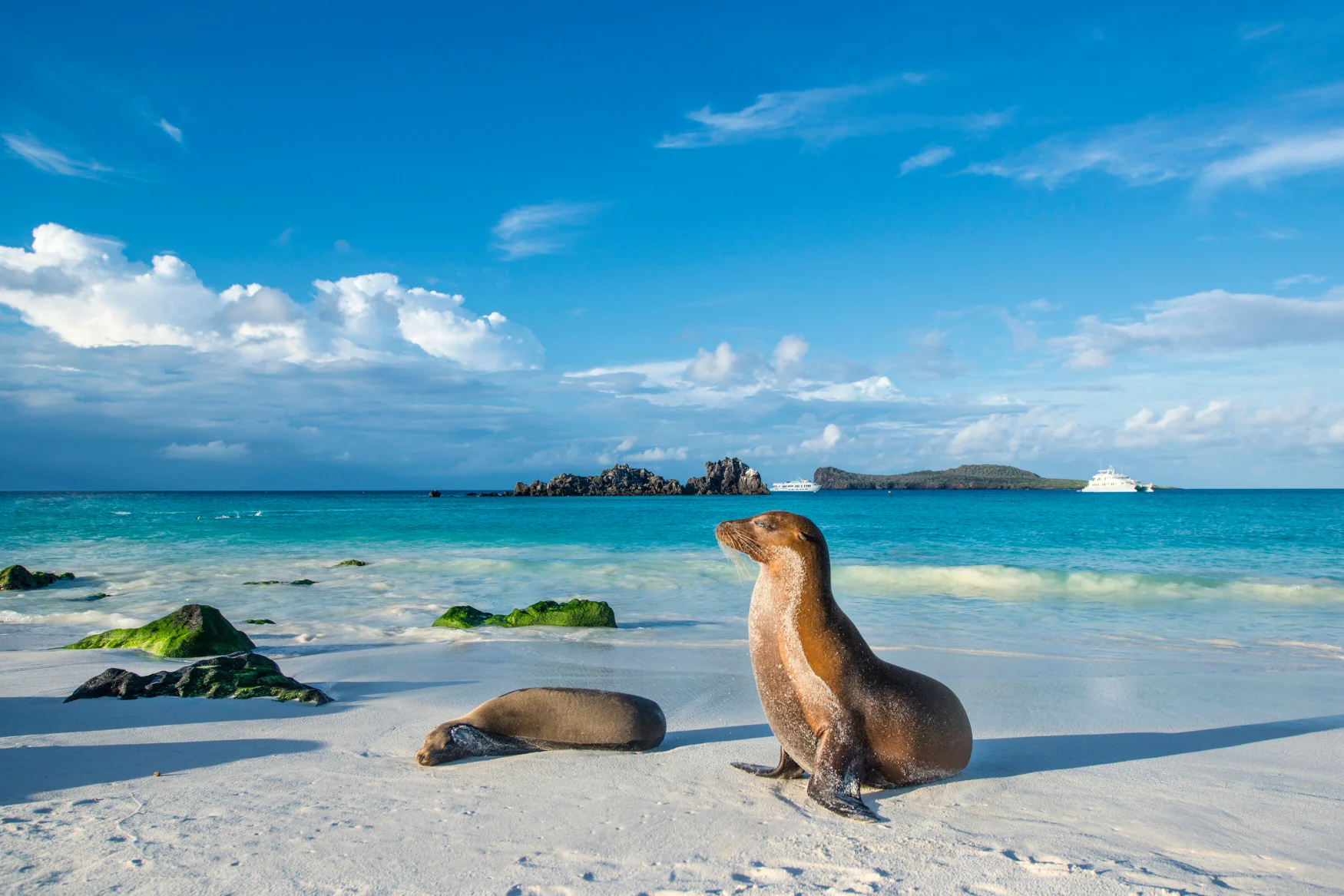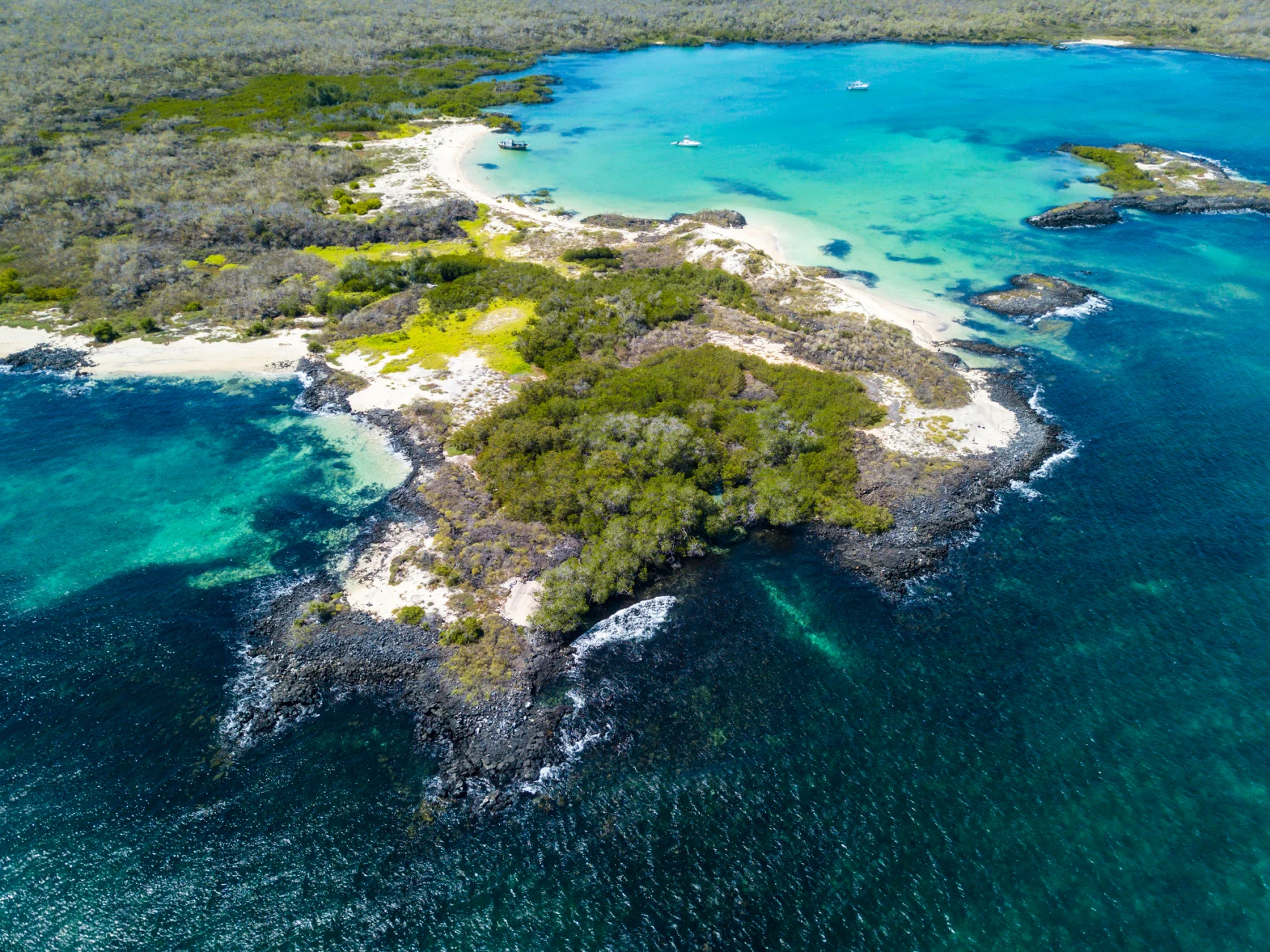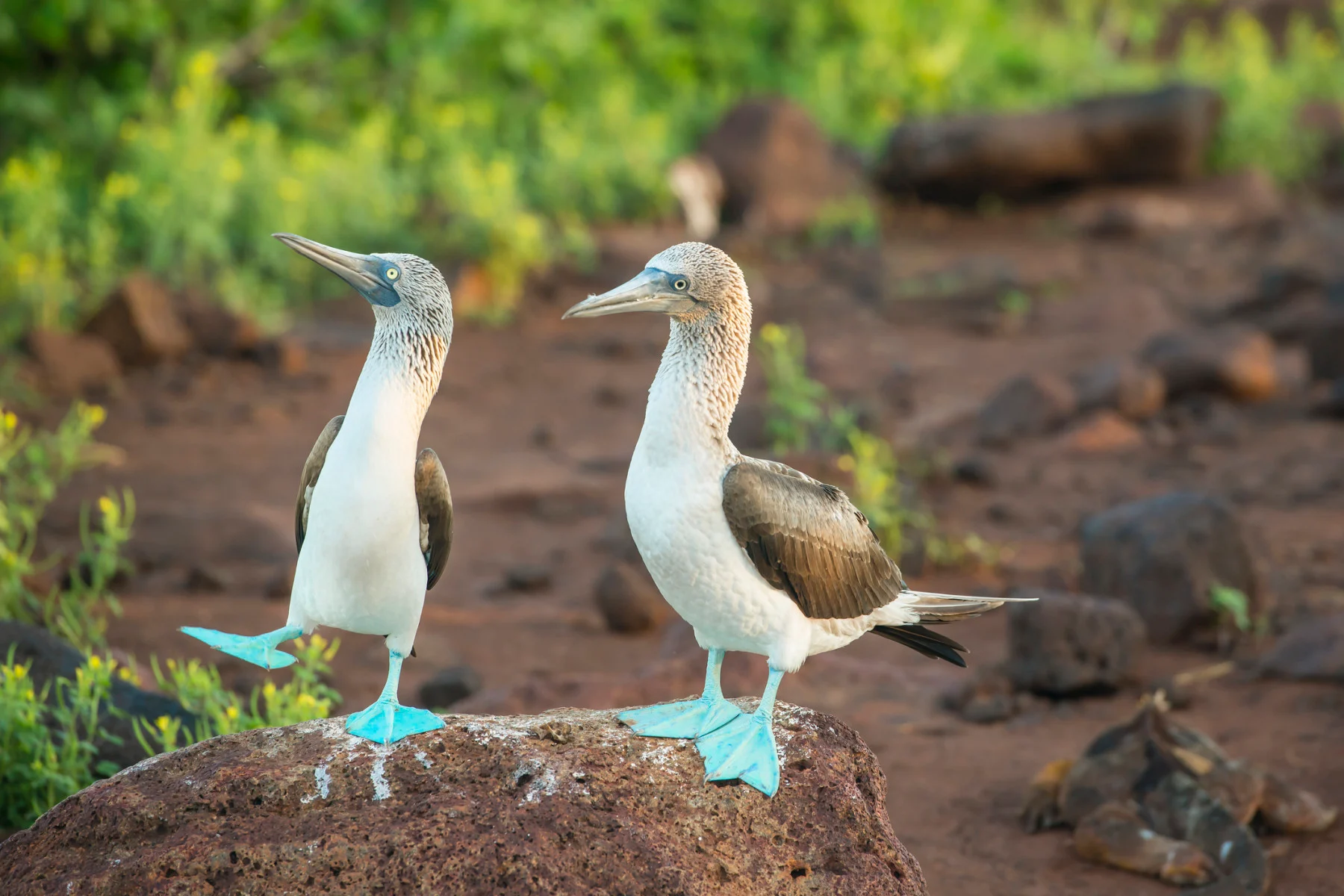
Protected areas around Galapagos islands expanded by Ecuador government
Protecting biodiversity and ensuring the ability of the Galapagos islands to capture carbon are two goals of the expanded marine protected area.
On January 14, 2022 Ecuadorian President Guillermo Lasso signed an official declaration to increase the size of the Galapagos Marine Reserve by 60,000 km2. Galapagos Conservancy called this initiative “a historic victory for ocean conservation efforts” that will protect “one of the richest concentrations of biodiversity on the planet.”
This string of islands located in the Pacific Ocean was made famous by scientist Charles Darwin who studied several species, notably finches, in this area during the early 1800s, which helped develop his theory of evolution.

An aerial view of the sandy Cerro Brujo Beach at the north western coast of San Cristobal Island, Galapagos, Ecuador. (guenterguni/ E+/ Getty Images)
The isolated islands are over 1,000 km away from the South American coast and scientists have stated that the unique vegetation and wildlife and partly due to the islands’ location near the equator and proximity to four major ocean currents that cause upwelling of nutrients from the depths of the sea.
According to the Galapagos Conservancy, 97 per cent of the reptiles and land mammals on the islands are endemic, meaning that they are only found in the Galapagos and nowhere else in the world. Some of the most iconic species include giant tortoises, iguanas, lizards, flightless cormorants, and the only penguin species that exists in the Northern Hemisphere.

A pair of blue-footed boobys (Sula nebouxii) at Galapagos Islands in the Pacific Ocean. (guenterguni/ E+/ Getty Images)
Expanding the marine protected area (MPA) around the Galapagos Islands is seen as an initiative to protect biodiversity and a way to ensure the region’s ability to act as a carbon sink. The governments of Costa Rica, Panama, and Colombia have also agreed to expand and link each of their MPA’s with Ecuador to create the Eastern Tropical Pacific Marine Corridor.
“As of today, Costa Rica, Panama, Colombia, and Ecuador are going to protect and connect two of the most biologically significant habitats in the world, today we are declaring a marine reserve for an area of 60,000 km2 that are added to the ocean, the great climate regulator,” Lasso stated at the signing ceremony.
The connection of the Galapagos Marine Reserve and protected Costa Rican waters aims to provide a “migratory superhighway” that will provide uninterrupted habitat to species that are moving through these areas.
Thumbnail credit: guenterguni/ iStock /Getty Images Plus












